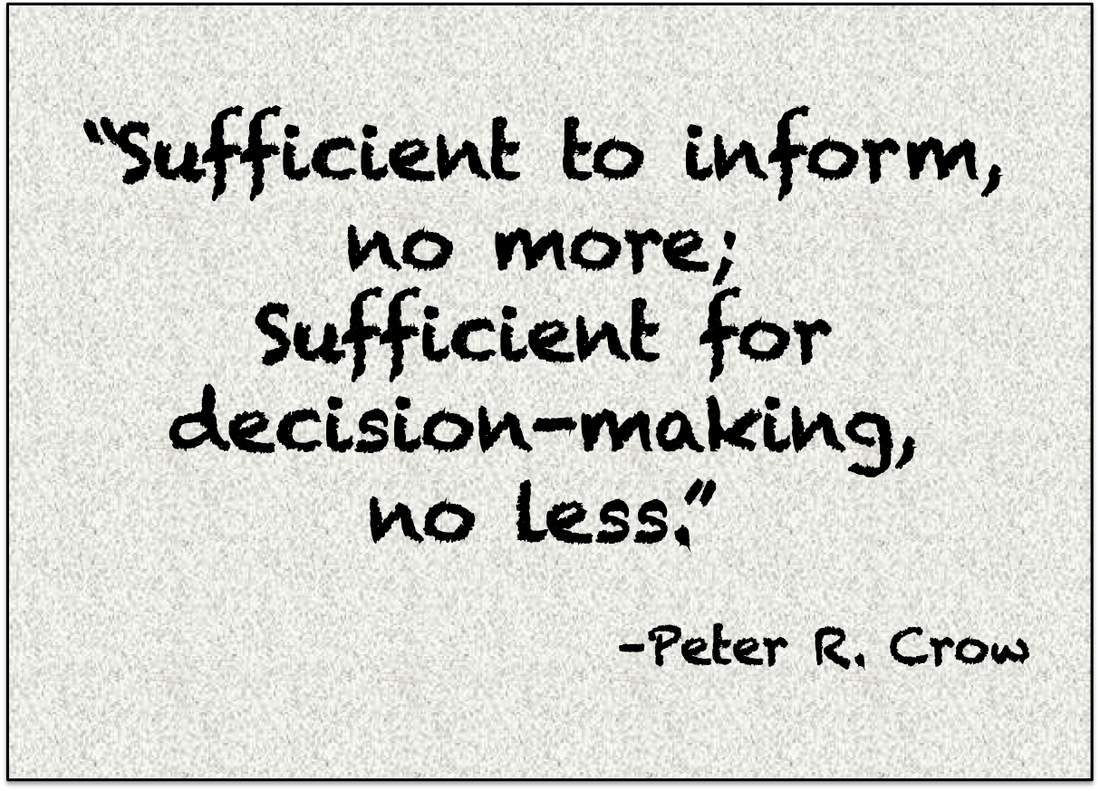|
I arrived back in New Zealand this morning from six productive days in London (client and new business meetings) and three days in Milan (EIASM conference: day one and day two summaries). My first morning back is typically consumed attending to any non-urgent mail (envelopes and packages, not email) that may have arrived. Today was no different. Then the phone rang. The person on the other end, a director named Simon (not his real name) wanted some advice. He was struggling to settle a dispute that had been simmering in a family business boardroom for a couple of months. Tempers were starting to become frayed. The board in question comprised six directors, three of whom were also shareholders (one was the managing director). The other three (including Simon) were independent directors. The dispute arose when one of the non-executive directors (who held approximately 28 per cent of the company's shares) disagreed with the other directors on a strategically important issue. After some discussion, Simon revealed that the director expected to influence the decision "commensurate with my shareholding". The other directors were not sure how to proceed. Thankfully, they sought external guidance before things got out of hand. This vignette is not uncommon in family-owned businesses (regardless of size, sector or complexity). It occurs when when non-executive directors want to exert 'power' and the board as a whole is not adequately informed about its duties and responsibilities. Unchecked it has the potential to cause significant damage. Fortunately, and notwithstanding the social tensions, the issue is far from insoluble. While debate (including vigorous debate) is to be encouraged in the boardroom (the research literature has associated vigorous debate with higher quality decision-making), directors need to understand that no one director necessarily has any more (or less) power than any other. When it comes to decision-making, all have an equal 'say'—one vote—because the board being a collective of peers required to make decisions together. Problems can occur if non-executive directors attempt to wield 'power' through their shareholding, even though shareholding has no relevance in the boardroom at all. Non-executive directors can (sometimes conveniently) lose sight of this, especially when an issue of importance to them is being debated or they hold strongly-held views on an issue. In the heat of the moment, they can confuse their director and shareholder decision rights (one vote per director v. one vote per share, respectively). Director decision rights apply when the board is in session (during board meetings). In contrast, shareholder decision rights apply in shareholder meetings only (e.g., the annual general meeting). Directors need to both comprehend this distinction and act accordingly, if the board is to be a place of productive decision-making. If you'd like to know more, about decision-making in the boardroom or any other aspect of good board practice, please let me know. I'd be delighted to serve you.
The 13th edition of the Corporate Governance Workshop convened by the European Institute of Advanced Studies in Management (EIASM) was hosted by SDA Bocconi in Milano, Italy. Approximately 50 leading thinkers and researchers from over 20 countries gathered to explore emerging trends in the fields of board practice and corporate governance. Nearly 50 presentations were accepted onto the two-day programme. Highlights from the second day follow, together with some overall reflections (highlights from the first day are posted in a separate summary):
Overall, the conference provided a wonderful forum for leading board and corporate governance researchers from around the world (especially Europe, but also North America and Asia) to get together to share ideas and discuss emerging trends. The collaboration produced some wonderful debates; strong agreement that less is known about corporate governance than what most researchers and consultants (especially) claim to know; and, an invitation to return in 2017 (which I will probably accept). However, there was one notable disappointment: mine was the only presentation informed by observations of what boards actually do. Researchers and consultants need to get off their backsides and get inside boardrooms if they are to truly understand corporate governance and provide credible recommendations of what boards should do in practice. More personally, I was approached by three different people to collaborate on a few different projects, which was gratifying. Two approaches in particular led to further exchanges over lunch and dinner: one to synthesise the learning from my board observation studies (the board's influence on firm performance) with research into psychological factors and group decision-making, and the other to dig into the performance of local government councils (this second project is of special relevance given an independent assessment project I'm currently involved with). Where these will lead remains to be determined. However the fact that people around the world are starting to realise that we need to understand how boards can be a source of value creation (because this relationship is simply not understood now, despite what most consultants claim) was heartening. I look forward to the journey in the coming months, including return visits to UK, Finland, The Netherlands and Italy in early 2017. If you wish to know more about the conference; receive papers on topics of interest; or, pose a question or commission some applied research, please get in touch. I'd be delighted to hear from you and to serve you.
The 13th edition of the Corporate Governance Workshop convened by the European Institute of Advanced Studies in Management (EIASM) was hosted by SDA Bocconi in Milano, Italy. Approximately 50 leading thinkers and researchers from over 20 countries gathered to explore emerging trends in the fields of board practice and corporate governance. Nearly 50 presentations were accepted onto the two-day programme. Highlights from three of the papers presented on the first day are summarised here (highlights from the second day are posted in a separate summary):
In sum, the day revealed a mix of interesting insights and concerns. In particular, one long-held concern (that many researchers continue to conduct research based on the analysis of publicly-available quantitative data) was upheld. Why researchers continue to investigate boards and corporate governance from a distance (outside the boardroom) is a mystery to me. If we are to truly understand what boards do, how decisions are made and influence is exerted by boards from and beyond the boardroom, then researchers need to adopt the recommendations of others: that direct observations are crucial to the gaining of reliable insights.
You must give newly appointed Wells Fargo Chief Executive Officer Tim Sloan credit. No sooner had disgraced former CEO John Stumpf left the building, Sloan delivered a speech to all employees to apologise for the scandal that had beset the company. That Sloan delivered an apology is a good first step on the path towards redemption (the company boasts a long and proud history), even though "we're sorry for the pain" appears to be an apology for the angst employees faced rather than the fake accounts action itself. Two things are especially notable in this case:
That Stumpf's (and now Sloan's) boss has both remained silent and appointed from within is very telling. (Note to the Wells Fargo board: If you want to talk further, in total confidence, here are my contacts details.)
Former sharemarket darling, Wynyard Group, was put into voluntary administration this week. The announcement was made via a notification to the share market and notice on the company website. The company was highly-valued, well-funded and governed by seemingly capable directors. Its products, software systems to assist in crime fighting, were seemingly in demand—evidenced by strong revenue growth since an IPO in 2013. Milford Asset Management, a shareholder, valued the company at nearly $120M at the time of the IPO. But Wynyard failed to make money, then or since. The result was inevitable: the company became caught in an ever-deepening hole that, in the end, was too deep to climb out from. When last traded, the notional value of the company had fallen to less than $40M. Now that the liquidator is involved, the residual share value is (close to) zero. What went wrong? Whereas some failures reported this year appear to have been grounded on hubris or fraudulent behaviour, such motivations do not appear to have been significant at Wynyard Group. The failure appears to have been more straightforward. Indicators have been visible for some time as well. Ultimately, the actions (or inaction?) of the board of directors need to be placed under scrutiny. The company's business model was characterised by infrequent high-value sales (read: a lumpy revenue profile). The company also employed lots of highly-capable software engineers and other technical specialists. Effective cash management is crucial in such companies. Superficially, the company appears to have been carrying too much cost, suggesting that it took on expense too far ahead of the revenue curve. The company does not appear to have had a backup plan to be activated if revenue expectations were not realised (in either the expected timeframe or manner). The market seemed to know there was a problem (track the share price over the last 18–24 months), yet the situation was allowed to continue seemingly without any major corrective action being taken. The company burned through over $140 million of shareholder funds. It's little wonder that the investors became bitter. Why were the problems not addressed by the board much earlier? Was the board (which included several high-profile directors, three of whom resigned in May and June 2016) not in control as it should have been? Though present, were directors asleep at the wheel rather, in effect adopting a passive style of oversight—in contrast to that conceptualised by Eells, Cadbury, Garratt and others? Was the board captured by an optimistic outlook and charismatic management? More pointedly, who was actually in control? The early indications suggest that the company was being controlled by management—ineffectively so, as is now patently clear—usurping the board's statutory role. What can we learn? That Wynyard Group has now joined (unwittingly) a rather long list of companies of interest to governance researchers and MBA classes (adding case example of what not to do) is clear. This case will also, no doubt, be played out in the business media and by 'experts' in the days to come. In the meantime and regardless of whether Wynyard is wound up or continues to trade in some form, the case provides salutary lessons for boards elsewhere:
Boards should discuss these and related matters periodically, to ensure they are appropriately focussed on (and adequately equipped to pursue) the value creation mandate. A formal, externally-facilitated board and governance assessment (providing an outside perspective) should offer useful insights as well, so long as any recommendations arising are acting on.
I'm returning to the UK and Europe in a few days' time—to attend meetings with business leaders in London and to present a paper on corporate governance at a conference in Milan.
One of the humbling privileges of working with boards and directors is the opportunity to participate in discussions and provide guidance on themes as varied as corporate purpose, strategy, corporate governance and board effectiveness. The overarching aim is straightforward: to help boards become more effective in the important role of steering and guiding the organisation they govern towards its intended purpose. Recently, the topic of reporting seems to have been front of mind for many directors. I've been asked who should determine the structure and content of the board pack (the board), and what the appropriate amount of detail to include in the board pack is ("sufficient"—see the maxim below). In responding to these questions, the first consideration is that the board report is no different from any other communications channel between two parties: the purpose of the report is to transport information to both inform the receiver and enable decisions to be made. Like other communications channels, the effectiveness of the exchange between management and the board is determined by the receiver, alone. Did the board understand the contents of the material in the board report? If the board is to have any hope of doing its job well, it needs to ensure the chief executive understands what information it requires for effective decision-making. Otherwise, what hope has the chief executive got of knowing or, worse, of the board of making high-quality decisions? If the chief executive has to second-guess the board, the likelihood (from bitter experience) is that the board pack will be structured in a form that suits the chief executive and the information may not be readily usable. The remedy to ensure the board pack meets the board's needs is straightforward: a 'board pack review' item should be included in the annual work plan. While one review per annum is appropriate, a brief review should be undertaken whenever a new director joins the board. The board should discuss the contents and structure of the board pack to ensure directors understand the information and can readily navigate their way around the pack as presented. If there are any concerns, changes should be recommended for the chief executive to act upon. This simple task should ensure the board gets what it needs to do its job properly and the chief executive knows what to prepare. The second question (detail) is similarly straightforward. On this question, the following maxim applies: If you would like some more information, including examples of how to structure the chief executive's report and financial report, please get in touch.
The challenge of influencing business performance from the boardroom is one that should not be taken lightly. Recently, I was invited by MILE (Medinah Institute of Leadership and Entrepreneurship) to discuss this topic with an international audience, in a webinar format. While the audience was primarily from the Gulf States, the comments have widespread applicability. Though biassed(!), I commend the webinar recording to you. If, having watched it, you would like to discuss any aspect of the presentation including implications for your board; challenge any claims; or, arrange an similar presentation to your colleagues, please get in touch. I am at your service. Al Brown, restauranteur, television personality and colourful raconteur, has a way with words. In this vignette, he talks candidly about several things he has learned about running a business successfully. These include:
While Al's businesses would be correctly categorised as small-medium enterprises by most people, the principles are universally applicable. I commend this short clip to all boards, as a scene setter just before your next board meeting gets underway; and, to executive teams, as a reminder of three important elements of effective leadership. How do these points fit with your understanding of effective business and board leadership?
Recently, an article was posted on the ICSA: The Governance Institute website, describing 5 essential qualities of a non-executive director. The author lists the following five 'core qualities' and suggests these need to form the basis of evaluations when companies are appointing non-executive directors:
This is a good list and several of the items are intuitively appealing. However, having read the article a few times now and compared these suggestions with the findings from my own research and others elsewhere, I am not sure all of these qualities are actually 'essential'. This set me thinking, leading to some supplementary questions:
Though progress has been made in recent years, these questions demonstrate our knowledge abut boards is far from complete. We still have much to learn about how boards actually work; how they should work; and, crucially, whether boards can influence company performance through the decisions made in the boardroom (or not). If answers to these very difficult questions can be found, they will probably have significant implications including perhaps to a new understanding of corporate governance and updated guidance for board practices, director recruitment and on-going director development. While some directors may struggle to come to terms with such implications, the flow-on effects for sustainable business performance, economic growth and societal well-being are likely to be significant.
|
SearchMusingsThoughts on corporate governance, strategy and boardcraft; our place in the world; and other topics that catch my attention. Categories
All
Archives
May 2024
|
|
Dr. Peter Crow, CMInstD
|
© Copyright 2001-2024 | Terms of use & privacy
|







